Basil is an aromatic and delicious herb that is easy to grow and can be sensitive to sudden changes in its growing environment.
When basil leaves turn brown, it is an indication of a possible infestation, disease, or your basil is in an inappropriate growing condition. If the brown patches or spots are caught early, basil plants always have the best chances to survive and recover.
In this post, we will help you figure out why basil leaves turn brown and some solutions on how you can prevent plant health deterioration.
We will also share the best growing conditions for your plants and how they can be.
9 Possible Reasons Why Basil Leaves Turn Brown
In our recent posts, we have already discussed other common plant issues in growing basil like white spots and black spots. If you are also experiencing them you may check out their possible cause here.
If it’s your first time growing plants or has been a plant parent for quite a while, it can be disheartening to see basil leaves turn brown.
Here are probably one of the possible reason why it happens:
#1 Pests
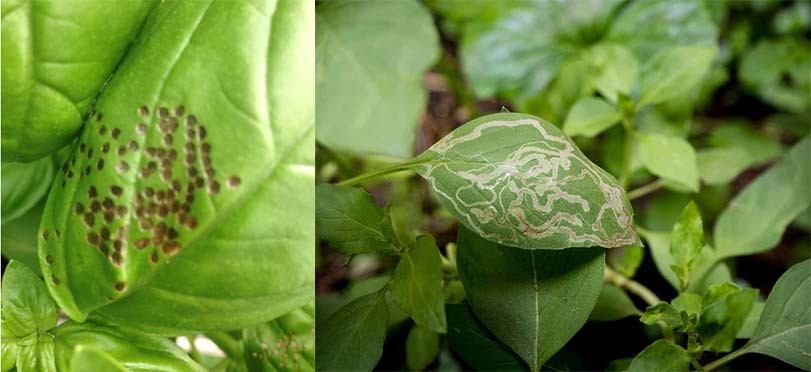
Sap-sucking insects are notorious for wounding the leaves of almost every plant. They can leave their feeding tracks as brown, dehydrated, and dried patches and spots on basil leaves.
Once these insects pierce the outer layer of the leaves, the inner layers will lose moisture which causes brown spots or patches.
Here are some of the common pests that cause basil leaves to turn brown:
Spider mites: These tiny black insects love the warm and hot weather during spring and summer. Like aphids, they love feeding on the underside of basil leaves.
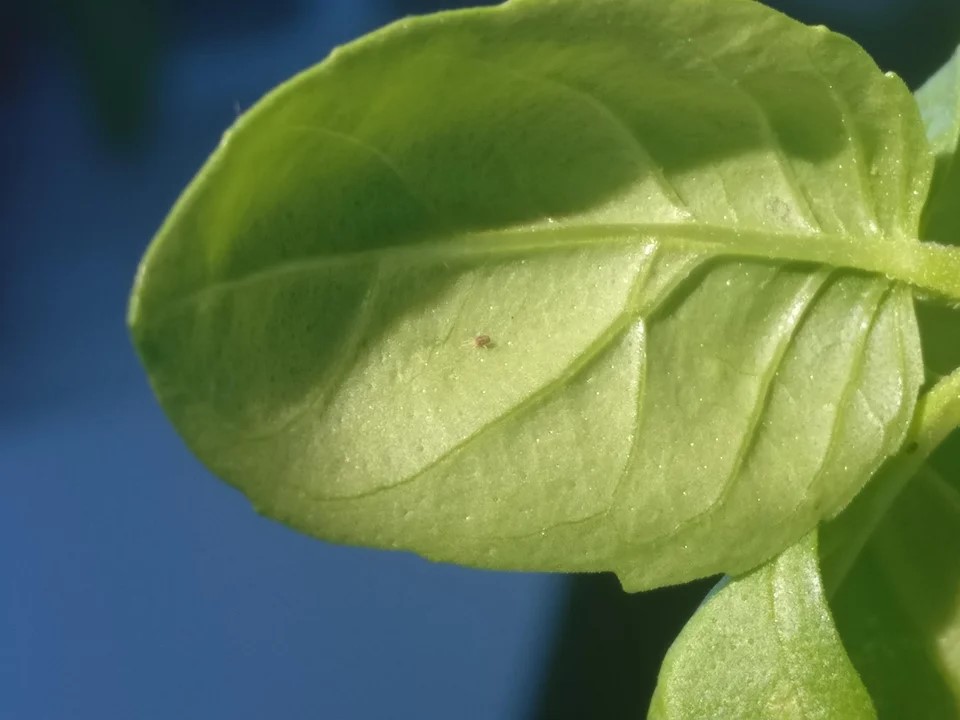
To know if you have a spider mite infestation, place a white bond paper below an infested basil leaf and shake it a few times.
If you see small black insects, then you have a spider mite infestation. However, spider mite infestation usually subsides as the cold season starts.
Scales: These are the insects that have tough shells and usually attack the stem and the leaves of basil. They suck the sap out of the leaves and stem and leave brown marks due to dehydration and damaged layers of leaves.
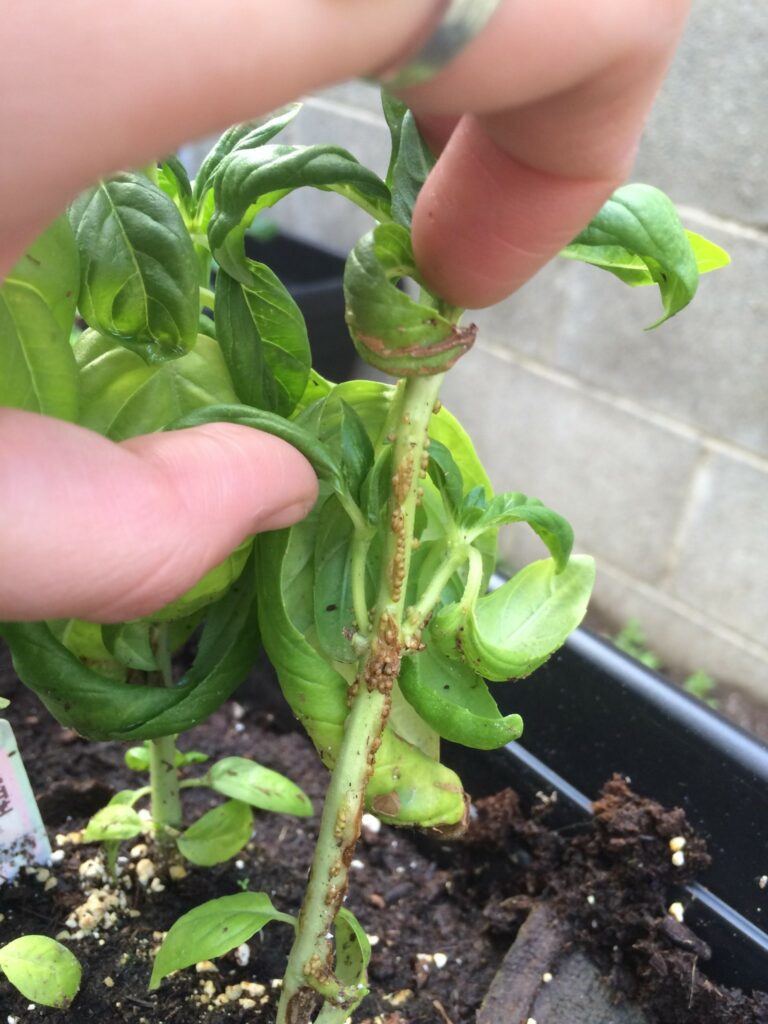
Aphids: These small insects are often found on the underside of basil leaves. They may not cause any damage on the top side of the leaves but may start feeding on its underside which will cause brown spots later on.
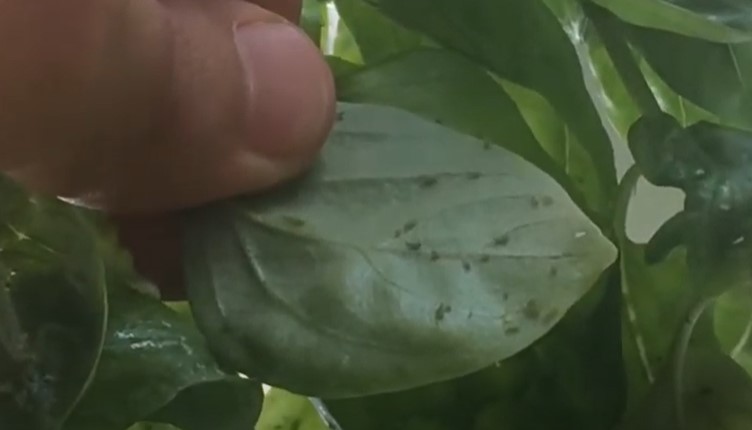
They come in different colors such as white or green. Other signs of aphid infestation are yellowing leaves and dropping leaves.
Thrips: These small insects tend to congregate on the buds and new leaves of basil. Signs of thrip infestation are curling leaves, bruised leaves causing brown spots, and holes on leaves.
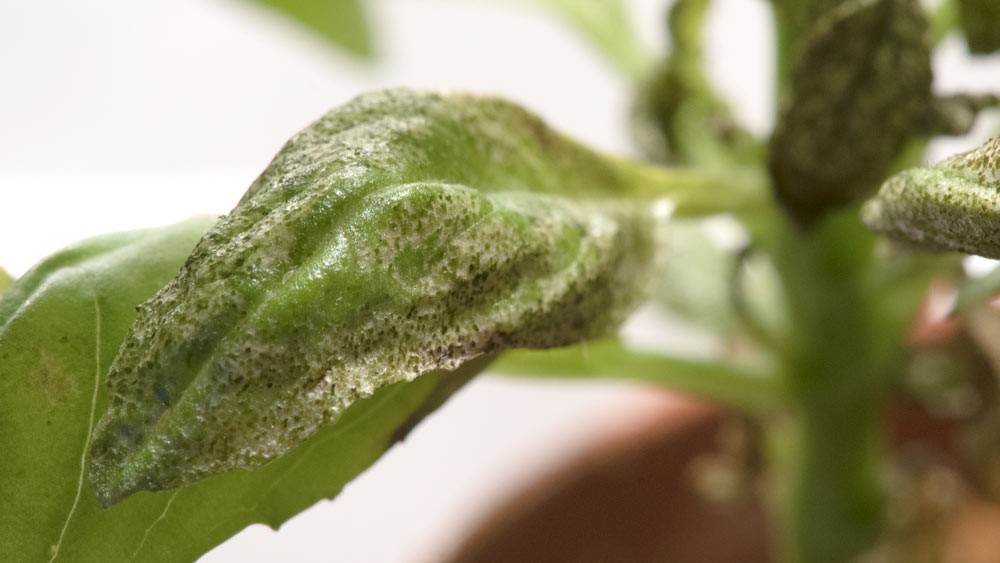
Leaf miners: The feeding trails of these insects always give away their identity. They feed on plants in circles and leave maze-like tails. They stay under the outer layer of the basil leaves, so you won’t likely see them while they’re feeding.
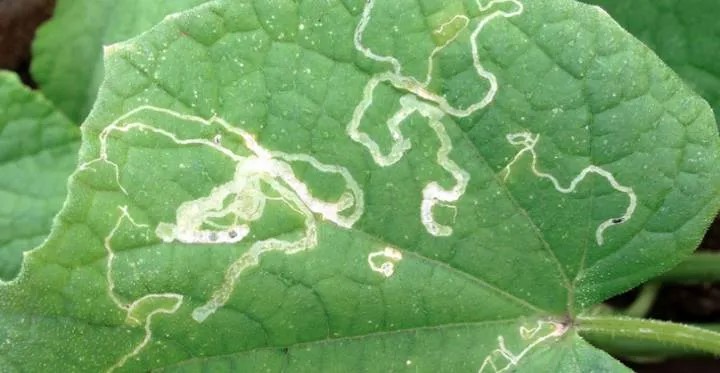
Four-lined bugs: The leaf damage of these insects to basil leaves is often a mystery to most gardeners.
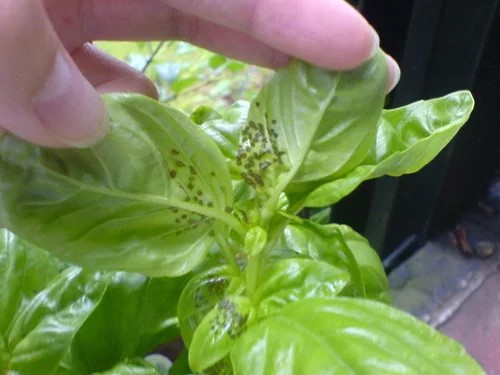
They are one of the rare pests in basil and are often recognized by experienced gardeners by the damaged spots that they produce on basil leaves.
The usual trick that most gardener’s to get rid of pests in their basil plants is to splash the surface and underside of leaves with water.
The best time to splash the leaves with water is early in the morning so the moisture on the leaves will have enough time to dry up at noon. Too much water on leaves may also attract spores of fungal diseases.
Another option is to use horticultural oil or insecticidal soap to get rid of the pests in your basil plants. Here are some of the best ones to try:
If you want to make the most out of your supplies at home, you may also create your homemade insecticidal soap solution. Here’s how:
Materials:
- 1 cup of oil (Any kitchen oil may do)
- 10 tbsps. of dish soap with no added formula like bleach or moisturizer.
- 5 cups of water
- Spray bottle
Directions:
- Mix 1 cup of oil and dish soap in a container.
- Dilute the mixture in 5 cups of water.
- Transfer the solution to a spray bottle.
Pro tip: The mixing ratio is 2:1 for dish soap and water, respectively. Adjust the concentration based on the amount that you need for the day. Apply it on your basil when the weather is cool with a temperature between 40F and 90F.
#2 Fungal Disease
Sometimes pest infestation can also cause double trouble and bring fungal spores into your basil plants. The gust of wind can also bring some pathogens onto your dear basil herbs.
Here are some of the common fungal diseases in basil that can be a possible reason why basil leaves turn brown in your garden:
Fusarium Wilt
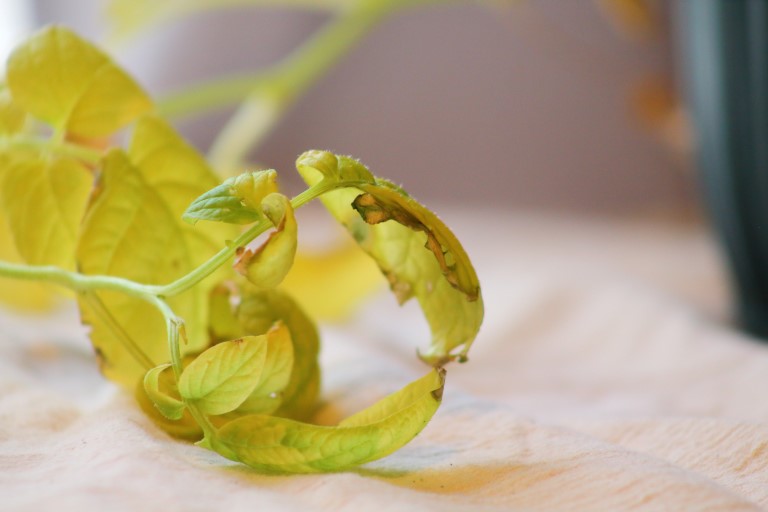
It is a common basil fungal disease that affects sweet basil varieties. It is caused by soil-borne fungus or from the seeds from infected basil plants.
Sadly, there is no cure for fusarium wilt and can infect other plants in your garden. The common symptoms of this disease are as follows:
- Stunted growth
- Wilted and yellowing leaves
- Brown spots or streaks on the stem
- Severely twisted stems
- Leaf drop
If your basil has this disease, you must get rid of it immediately to protect your other plants from getting infected. If your infected basil is planted in the ground, you must refrain from planting the same kinds of plants on it for the next two to three years.
Verticillium Wilt
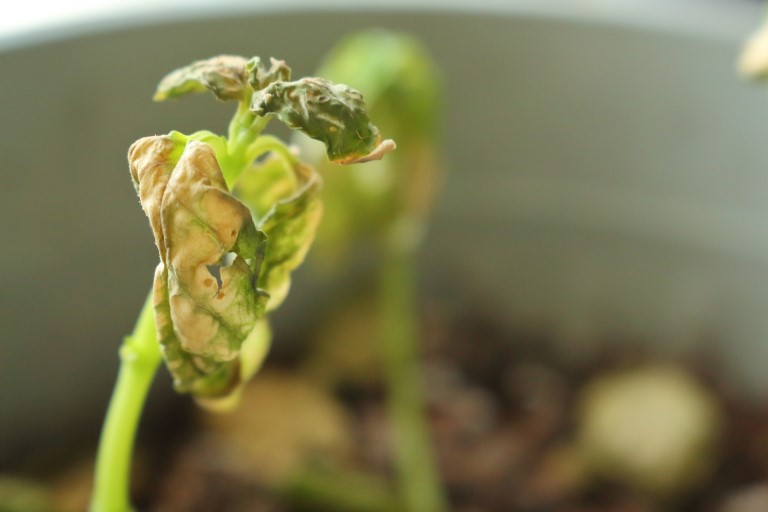
A fungal disease that attacks the roots of basil plants. Due to the inability to absorb enough nutrients from the soil, it can slowly cause stunted growth and overall plant health decline.
Other symptoms include:
- Droopy leaves
- Yellowing or browning of leaves
- Leaves falling off
If you see these symptoms in your basil, the disease has already caused too much damage and the plant can no longer be saved. The only option that you can do is get rid of it and sterilize the soil after killing the fungus that lives in it.
Downy Mildew
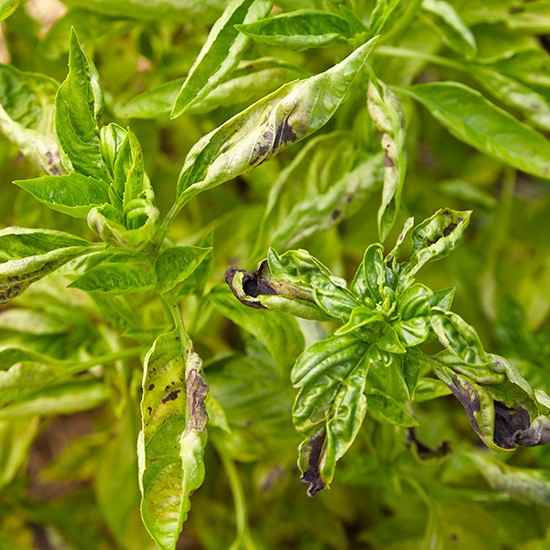
It is often mistaken as a nutritional deficiency since its symptoms include yellowing and browning of basil leaves.
However, if you check the brown patches carefully, there is a powdery and spongy residue on them. Basil is more susceptible to this disease when the temperature drops to ~60°F.
You may use fungicides to treat downy mildew using neem oil and copper fungicide for organic gardeners. Others may use fungicides with chlorothalonil. Here are some of the products that you can try:
Cercospora leaf spot
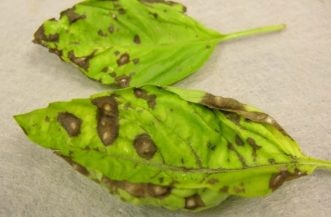
This is a common fungal disease that causes brown and black spots with white or a lighter spot at the center. It is caused by Cercospora ocimicola that is mostly found in sweet basil.
This fungal disease thrives in a humid environment and can overwinter in the soil. Its spores spread through contaminated materials, wind, and water splashes.
When it comes to fungal diseases, prevention is always the best defense. When the disease has already spread to other parts of basil and caused plant health decline, the chances of reviving your basil will be too slim.
So, to prevent fungal diseases from causing basil leaves to turn brown, here are some plant care tips:
- Avoid overwatering basil because soggy soil encourages the growth of fungus on moist leaves and stems.
- Allow adequate spacing between your basil plants for better air circulation. The ideal distance between each plant is 12 to 24 inches.
- Always clean your garden tools before and after use to prevent accidental transfers of pathogens and spores of fungal diseases.
- Avoid overhead watering especially with the herb varieties in your garden.
#3 Lack of Sun or Too Much Sun
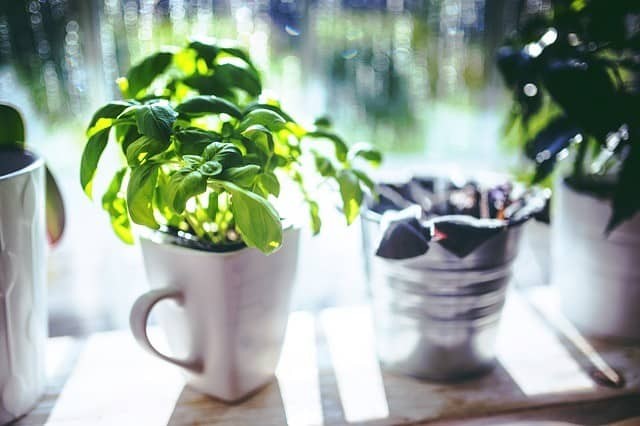
Basil is a tropical plant that thrives in sunny weather. It requires 6 to 8 hours of full or partial sun every day.
Sunlight is an essential part of photosynthesis that helps basil store energy to produce more leaves and grow.
Signs that your basil lacks enough sun include:
- Leaves curl
- Yellowing and browning leaves
- Long stems but few leaves
- Plant health decline
Outdoor basil should be placed in an area where it can receive full sun. If placed indoors, potted basil should be placed in a south-facing window sill or placed under an artificial UV light for 12 hours.
Under the scorching sun during the peak of summer, you may place the potted basil plants in a partially shaded area to prevent too much dehydration due to extreme weather conditions.
#4 Overwatering or Underwatering
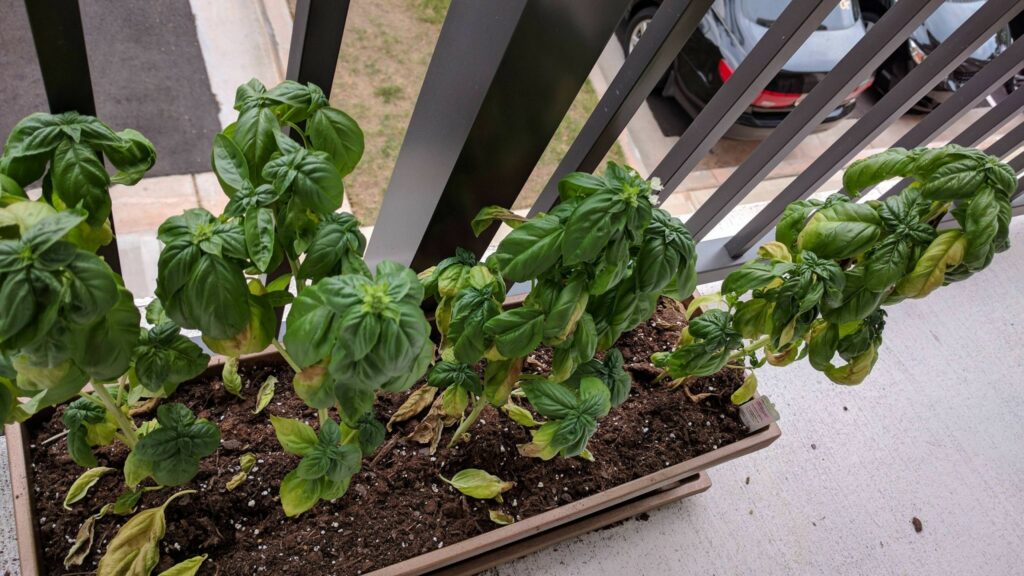
If your basil leaves turn brown on their tips and start to curl, then it’s a sign of watering issues. While basil only needs to be watered every week, their location is a crucial indicator of how much water you should give them.
Basil grown outdoors will need more water since moisture in the soil can easily evaporate than those indoors, not to mention the direct sunlight that they receive.
If your in-ground basil gets 6 hours of full sun, prevent dehydration with deep watering every week. You may invest in a moisture meter for better assessment.
For indoor basil, watering should be a bit lenient since it will take time for the moisture to evaporate than outdoors. You must water it with an inch of water every week and make sure that the water drips to the drainage holes to ensure deep watering.
Monitor the moisture on the soil of the indoor basil by pressing your finger against the soil, if the soil gets attached to your finger that means it’s too soggy. Your fingers must feel damp and not dripping wet whenever you touch the soil.
Under-watered basil is usually bitter and produces a pungent smell rather than aromatic.
On the other hand, overwatered basil usually shows signs of nutrient deficiency and drought through its leaves turning yellow or brown. You will also notice the stem and roots are loosely attached to the soil which is an indication of root rot.
To fix overwatering problems, you must only water your basil plants when they need it. When you see that the soil is dry, water them. It is a case that is not solved by underwatering your basil.
#5 Soil pH Problems
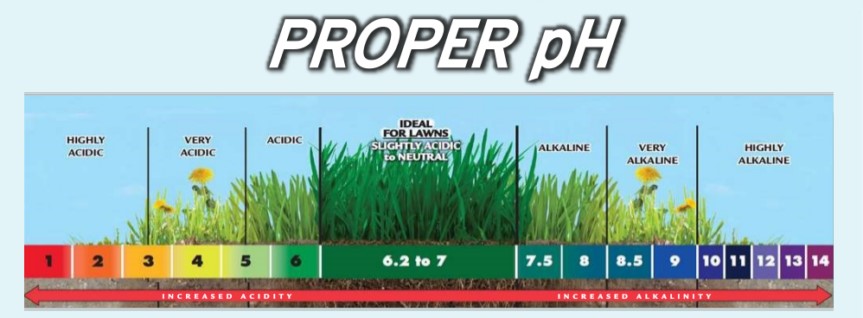
The acidity and alkalinity of the soil is a major factor in helping your basil absorb nutrients from the soil.
According to the University of Minnesota, basil grows and thrives in a soil pH range of 6.0 to 7.5 which is neutral to slightly acidic and alkaline. It also prefers a sandy loam which allows good soil drainage.
If the soil is highly acidic or alkaline, the roots will find it hard to absorb water and nutrients from the soil. It can lead to leaf browning, curling, and fertilizer burns at the base of the plant.
Always check the soil pH to ensure that they are in line with the needs of your basil. You may use a soil pH meter to guide you in adjusting the soil pH.
#6 Temperature Stress

Basil is a tropical plant that thrives in warm temperatures. Though it is easy to grow from germination, it can be quite sensitive to a sudden drop in temperature. Basil plants are not a fan of extreme cold, frost, or even cold drafts.
When cold temperatures rise during the cold season or nighttime temperatures drop below 50°F, basil leaves react by turning brown, deformed, or stunted growth.
You can save your basil plants from temperature stress by placing them indoors during cold nights or repotting them in warm soil.
#7 Rootbound
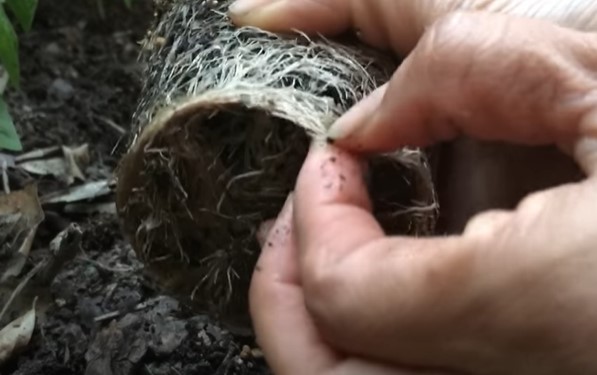
Basil is notorious for aggressive roots like mint. The roots can develop and invade a whole pot until some roots peek in the drainage holes of your pots. One of the telltale signs that your basil has become rootbound is when the soil dries out fast after watering it during a warm sunny day.
If you let your basil become rootbound and outgrow its pot, the roots will drown from the water underneath the pot. Prolonged exposure of roots to water will cause either root rot or nutrient deficiency that will cause basil leaves to turn brown and eventually die.
If you find out that your basil is rootbound, let it scratch out its roots in a larger pot. The ideal pot for small basil plants is at least 8 inches in diameter with a depth of 10 inches.
#8 Plant Shock or Plant Stress
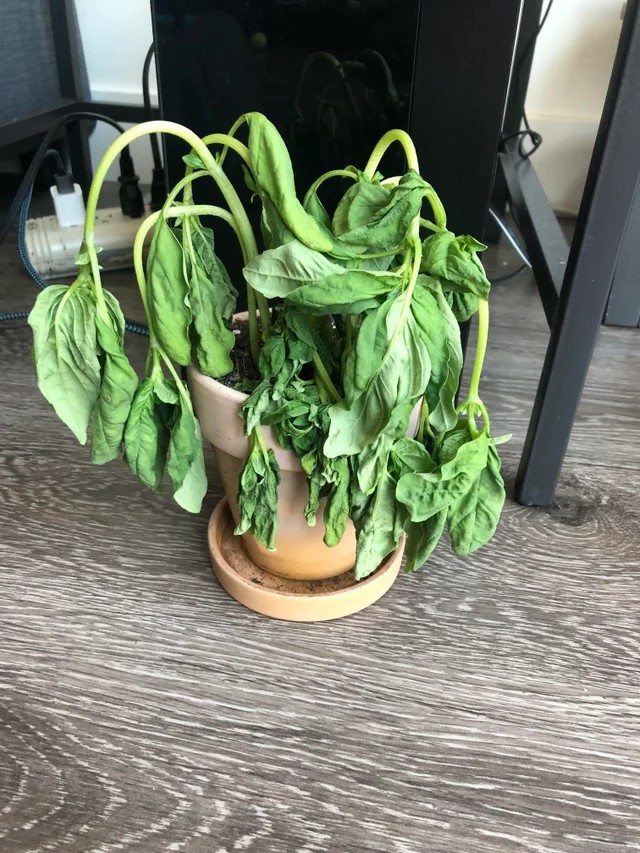
Plants, in general, are like humans who need to adjust to their new environment. If you repotted a plant or place it in a new environment, it’s only natural to see the following signs of adjustment stage:
- Stunted growth
- Wilting
- Yellow or brown leaves
Give it a few weeks for the basil plants to adjust to their new home and continue nurturing them with sun, water, fertilizer, and love. Once it gets acclimated to its new soil, you will see light and perk up again. If there’s one thing you will learn with gardening, it would be patience and persistence.
Pro tip: Avoid repotting your plants too often as they will fail to adjust properly and may eventually die.
#9 Bacterial Disease
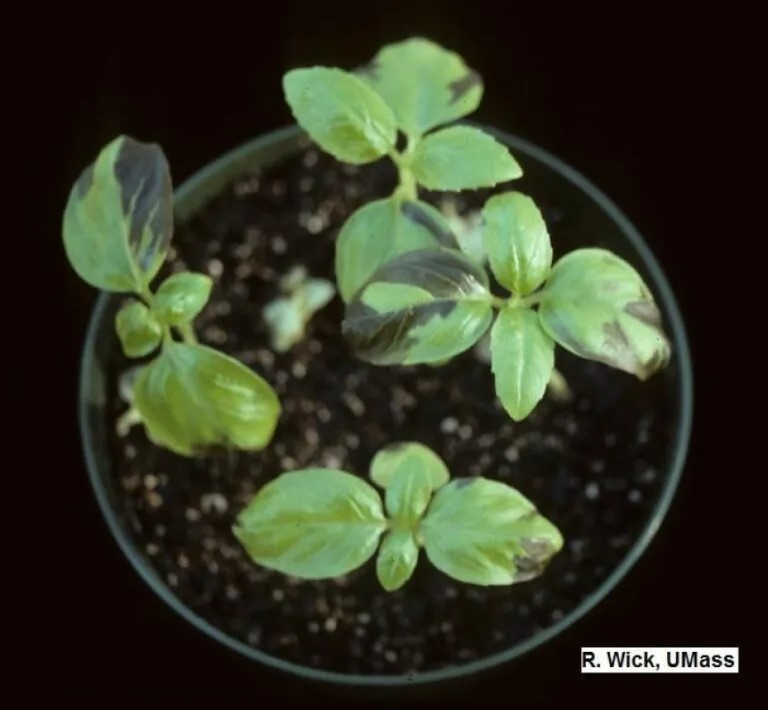
Pseudomonas cichorii or bacterial leaf spot is a bacterial disease that causes brown or black spots on basil leaves and stems. It is a soil-borne disease that often spreads through its spores from water splashes from the soil.
Like other severe fungal diseases, there is no cure for bacterial leaf spots. You must get rid of infected parts of the plants as early as possible to prevent the spores from spreading.
However, if the infection has been too severe, you need to get rid of your basil and save your other plants from this disease.
Plant Care Tips For Growing Basil
If you want to grow basil from seeds, you may start doing them during fall or winter while keeping them indoors.
The temperature needed for proper germination indoors is 65°F to 75°F (or 18°C to 24°C). After a few months, you may transplant the seedlings, with at least three leaves, outdoors during spring and transplanted outdoors in spring.
Outdoor basil needs the following:
- Six hours of sun per day
- Nighttime temperature above 60°F
- An inch of water per week (or more when the weather is too hot)
- Pruning of flowers and height maintenance
- Propagate using seeds or cuttings
Basil plants should remain at a certain height to encourage the continuous production of leaves. Flowers should also be cut to help the plant focus its energy on developing more leaves.
Lastly, too much and too little sunlight, water, and fertilization can cause several health problems in basil.
Can You Still Use Basil That Goes a Little Brown?
As long as the brown leaves are not slimy and pungent, you can still use them for several purposes. They may not be as delicious as healthy leaves but they can be used for:
- Dried spice
- Sandwich flavoring
- Sauce additive
- Add in fresh salads
Final Thoughts
Finding out why your basil is in bad health can be frustrating. So, we hope that this post has helped name a few of the possible causes why your basil leaves turn brown and save them from overall plant health decline.
If you find this post helpful, please don’t forget to share it with your friends and save their time in going to the rabbit hole of research and trial and error.
Also, please let us know in the comments below about your experience in diagnosing the condition of your basil plants.
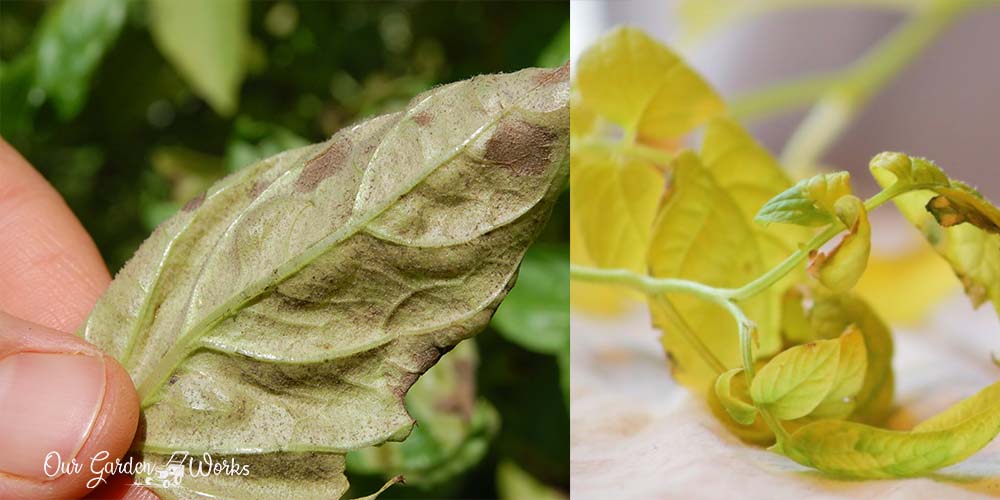
You say that yellow leaves or browning tips could be a sign of over or underwatering but don’t clarify which… My basil plant looks great with a few lower leaves beginning to brown on the tip – they get full sunlight every day on my windowsill. Based on your description it seems that it is potentially underwatered, but want to make sure! Your article is fantastic and very helpful.
Proofread your answers. They are good explanations if the reader already knows what you mean, not what u say. 1 example is towards the end of post where you suggest that transplants or new starts are good to use “if they are slimy or diseased” . In general, Someone with better grammer should edit before posting.
I did however, find good and plentiful information on pests and diseases, and what to do to treat plant
Thank you